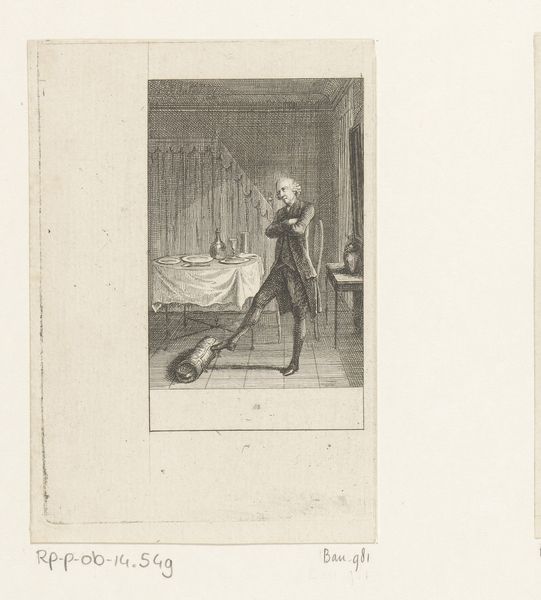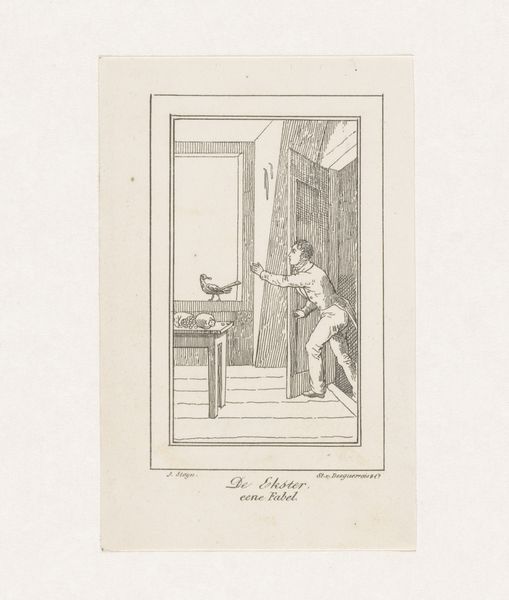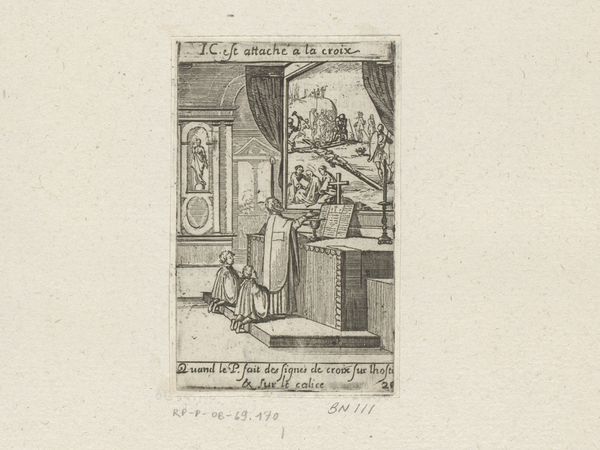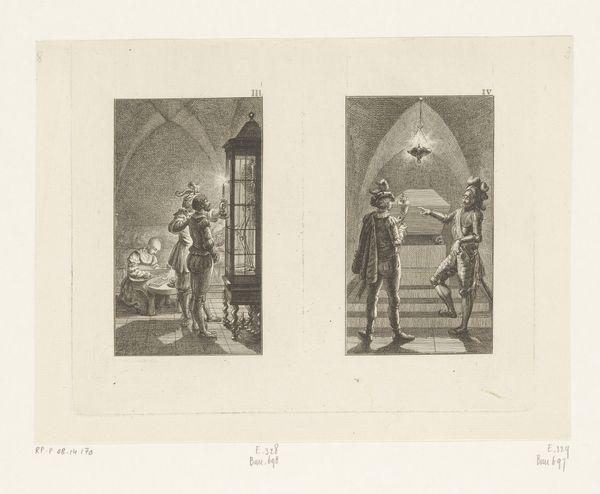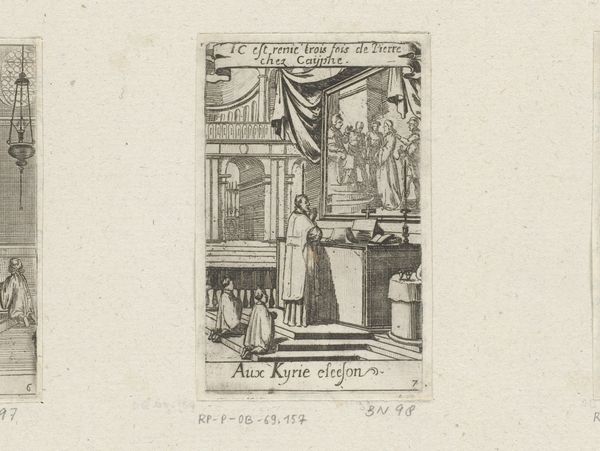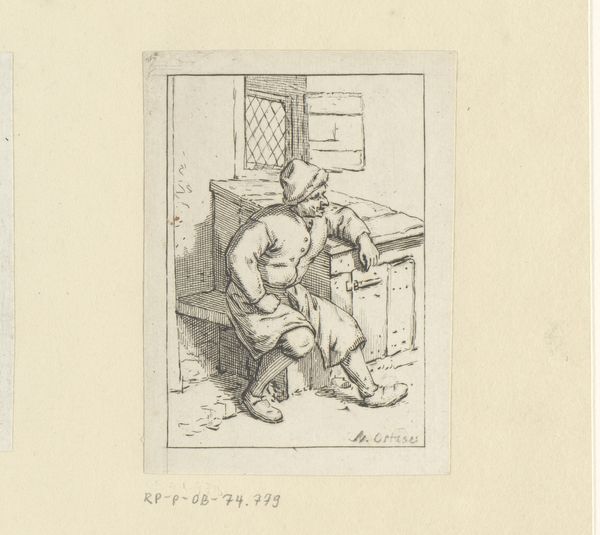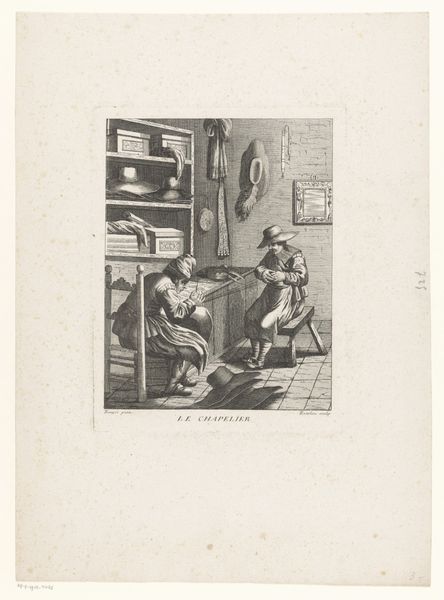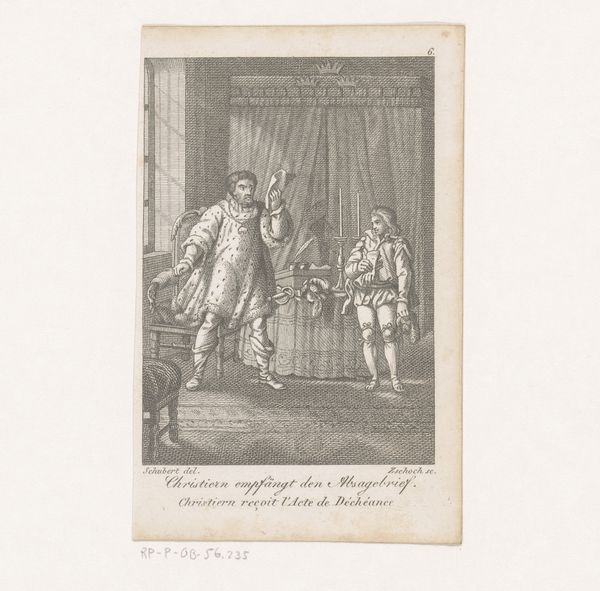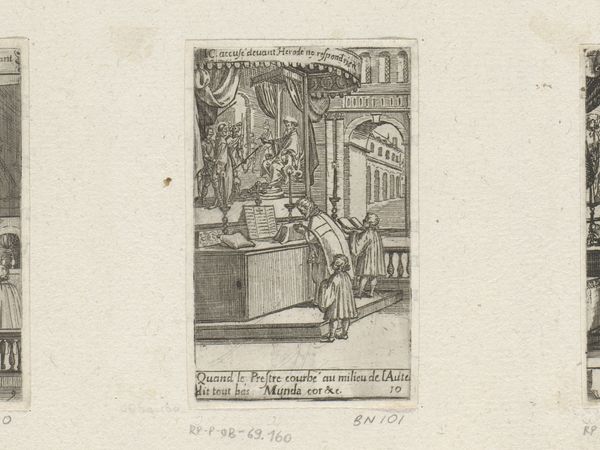
Vrouw steekt dolk in het hart van de opgehangen Lodewijk Filips II van Orléans 1792
0:00
0:00
Dimensions: height 121 mm, width 175 mm
Copyright: Rijks Museum: Open Domain
Curator: Here we have an intaglio print from 1792, created by an anonymous artist. The artwork is titled "Vrouw steekt dolk in het hart van de opgehangen Lodewijk Filips II van Orléans", which translates to "Woman stabs a dagger in the heart of the hanged Louis Philippe II of Orléans." It’s currently held here at the Rijksmuseum. Editor: Whoa, talk about dramatic! My initial feeling is... stark. And utterly brutal. The lines of the engraving are so precise, so cold, making the violence almost clinical. I feel a chill just looking at it. Curator: The material reality of this image as a mass-produced print is key to understanding its impact. Intaglio engravings like this, with their reproducible nature, played a crucial role in disseminating political propaganda and shaping public opinion during periods of upheaval, don't you think? Editor: Absolutely! The social context just screams revolution! Imagine the power of that sharp little dagger in her hand, striking against such aristocratic pretense represented by the hanging nobleman. I wonder about the copper plate. Who crafted the tools that incised that vengeful image into the metal? Was it just one person who transferred all this violence into the image, or multiple hands? Curator: The composition emphasizes this tension perfectly. Framed within that oval, it almost feels like a theatrical stage. There's Louis Philippe, dangling precariously from a makeshift noose fashioned to mimic fine silk, while a figure, likely symbolic, delivers the final blow. I think there's a stark commentary on power, morality and social retribution. The engravings themselves would likely been done to depict political issues, this imagery served the interest of an artistic message to spread amongst viewers of this artwork. Editor: It certainly prompts reflection. Seeing the clean, crisp lines, you’d never guess the image’s chaotic origins during such a turbulent era. It shows the art of printmaking not just reflecting reality, but actually shaping it. It is a potent reminder of art's complex ties to the power of production, the social classes, and the consumption patterns of the time, isn't it? Curator: Yes, definitely! It's a dark image, but compelling. It reminds us that even within the neat frames of art history, there lies the messiness and moral ambiguity of lived experiences, engraved for eternity into cold metal plates.
Comments
No comments
Be the first to comment and join the conversation on the ultimate creative platform.
